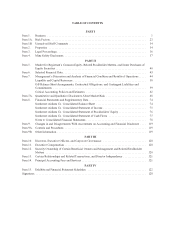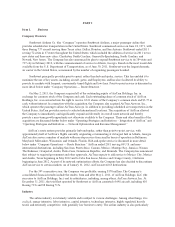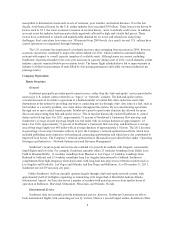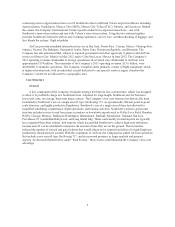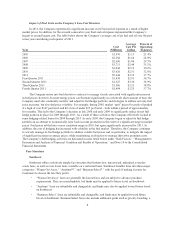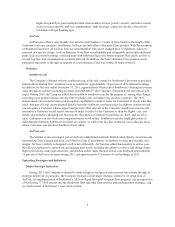Southwest Airlines 2011 Annual Report Download - page 16
Download and view the complete annual report
Please find page 16 of the 2011 Southwest Airlines annual report below. You can navigate through the pages in the report by either clicking on the pages listed below, or by using the keyword search tool below to find specific information within the annual report.
designed to be more fuel efficient and environmentally friendly, and the Company believes the 737 MAX will
(i) have the lowest operating costs in the single-aisle segment and (ii) benefit the Company with an engine/
airframe combination that is uniquely designed to optimize operating performance of the Company’s fleet. In
addition, the 737 MAX will enable the Company to replace certain Boeing 737 and/or Boeing 717 aircraft. The
Company has determined the Boeing 717 aircraft does not fit within its long-term overall fleet plans. In addition,
replacement of the Boeing 717 aircraft would enable the Company to return to operating with a single aircraft
type, with the associated operational benefits discussed above under “Company Operations – Cost Structure.”
The Boeing Next-Generation 737. In December 2011, the Company also announced that it expanded its
current orders for the Boeing Next-Generation 737 aircraft from 142 to 200, which increased the Company’s
overall total firm orders with Boeing to 350 for 2012 through 2024. The orders are intended to predominately
serve as replacement aircraft in the Company’s fleet. The Company also has options to purchase an additional 92
Boeing 737 Next-Generation aircraft and an additional 150 Boeing 737 MAX aircraft. The Company expects its
long-term, fuel efficient fleet modernization plan to provide substantial flexibility to manage its fleet needs in a
variety of economic conditions. The Company’s future aircraft delivery schedule is set forth in more detail under
“Properties – Aircraft.”
Southwest Cabin Refresh. In January 2012, the Company announced its introduction of a new cabin interior
design that uses durable and environmentally responsible products to reduce waste and create weight savings
onboard the aircraft, while at the same time increasing the number of seats and enhancing Customer comfort. The
Company plans to begin retrofitting the Southwest current fleet of Boeing 737-700s in March 2012 and
anticipates the retrofit will be completed in 2013. The Company plans to retrofit the AirTran current fleet of
Boeing 737-700s as such aircraft are converted to Southwest livery beginning in 2012.
Reservation System
The Company intends to replace Southwest’s existing reservation system with a system that would provide
the ability to serve international destinations and that would allow for other revenue management and Customer
Service enhancements. The Company anticipates the reservation system replacement will be a multi-year project,
with other key technology projects, such as those related to AirTran integration, All-New Rapid Rewards, and the
introduction of the Boeing 737-800, taking priority.
Other Strategic Initiatives
In addition to the Company’s four major strategic initiatives discussed above, the Company has continued
to design, implement, and manage other strategic initiatives to increase revenues, improve cost controls, and
continue to attract and retain Customers.
Network Optimization and Revenue Management
During 2011, the Company continued to use profitability management tools to aggressively manage
capacity and route expansion through optimization of its flight schedule to better match demand in certain
markets. These efforts contributed to improved revenues and load factors during 2011. The Company also set the
stage for long-term growth by beginning the process of aligning the Southwest and AirTran networks. For
example, during 2011, the Company determined that high jet fuel prices have made the economics of many
AirTran routes unprofitable. In response, the Company decided to remove AirTran flights from certain markets
and reallocate them to other markets. The Company expects the connection and optimization of the Southwest
and AirTran schedules and network to be a multi-year undertaking, but believes these efforts will yield
significant synergies and financial benefits. The Company intends to continue to expand the depth, reach, and
profitability of its overall network.
10


